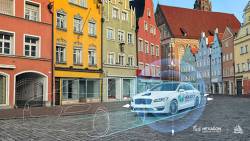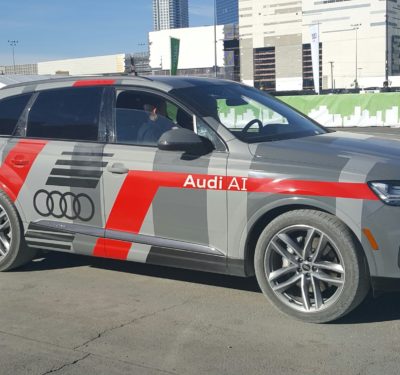The U.S. Transportation Department (DoT) announced last week that it is creating an Advisory Committee on Automation in Transportation (ACAT) to serve as a resource for framing government policy for driverless cars.
Transportation Secretary Anthony Foxx said that new committee will not only help determine automated vehicle policy, but will look outside of government agencies for advice. Committee members will assess DoT’s current research policies, regulatory support and current research, the agency said. These include all technical and policy research for all potential transportation nodes to include freight, aviation, railroad, and others. DoT plans to operate ACAT with 15 people who have “cross-modal perspectives on issues like intelligent transportation systems (ITS), robotics, enhanced freight movement, air traffic control next generation technology, and advanced transportation technology deployment.”
Committee members will serve 2-year terms, but will be limited to no more than two consecutive term reappointments, the government said. DoT’s ACAT announcement comes after it announced the Federal Automated Vehicle Policy last month, detailing safety and regulatory requirements for testing and implementing self-driving technology. The much-anticipated policy uses a 15-point safety assessment to set expectations for autonomous vehicle researchers and manufacturers. The assessment asks automakers to opt-in to data sharing when testing and evaluating self-driving cars. With state governments already crafting their own autonomous vehicle rules and policy, DOT hopes this new document will serve as a framework for a national rollout by effectively replacing, or suggesting replacement, to those local laws.
However, a flap has already occured when the California Department of Motor Vehicles (DMV) recently held a public workshop on draft deployment regulations for autonomous vehicles. California became the first state to attempt to incorporation the federal policy into state rules. One of the topics that is in question is the California DMV’s placement of National Highway Traffic Safety Administration (NHTSA) voluntary safety performance guidance into the permit approval process, said Marc Scribner, Competitive Enterprise Institute research fellow. Scribner also contends that the California DMV failed to adhere to the Society of Automotive Engineers’ (SAE) definitions, which form the basis of NHTSA’s concept of vehicle automation systems. As a result, the DMV’s draft rules repeatedly use terms explicitly rejected by SAE International and NHTSA, such as “autonomous” and “control,” which muddle testing, deployment, and legal environments, he said. “If California continues down its current path, it threatens not only the innovation of automated vehicles, but the lives of people who would have otherwise been saved if not for the deployment delays that result from these misguided rules,” Scribner said.
Overall, Scribner says that while the California DMV has not been particularly accommodating [to the industry], the state’s legislature enacted a very poorly crafted statute. “As a result, the DMV’s hands are to some extent tied. Legislators and the governor have basically ordered them to promulgate nonsensical regulations,” he said. The autonomous vehicle regularly action will not only continue at the federal level, but at the state and local levels where most of the action is, said Scott Frank, Airbiquity vice president of marketing. “In the United States, autonomous regulation is primarily being driven at the state level where the roads are – while the federal government focuses on studying the issues, technology, transportation impacts, facilitating collaboration, and drafting guidance for private and public sector participants,” he said. “Having said this, only four U.S. states have passed legislation, 11 have attempted to pass legislation, but failed, and fifteen are considering legislation. In Europe, autonomous regulation is primarily driven at the federal level with many countries relaxing and refining existing legislation to accommodate autonomous as the understanding of the technology and issues increase.”
As far as the insurance industry is concerned, Frank said they definitely have a vested interest in working with industry participants and governments to get legislation in place as quickly as possible to clearly define the liability for SAE Level 3-5 autonomous vehicles. “But in the end it will be the role of governments to draft and pass the regulations,” he said.






